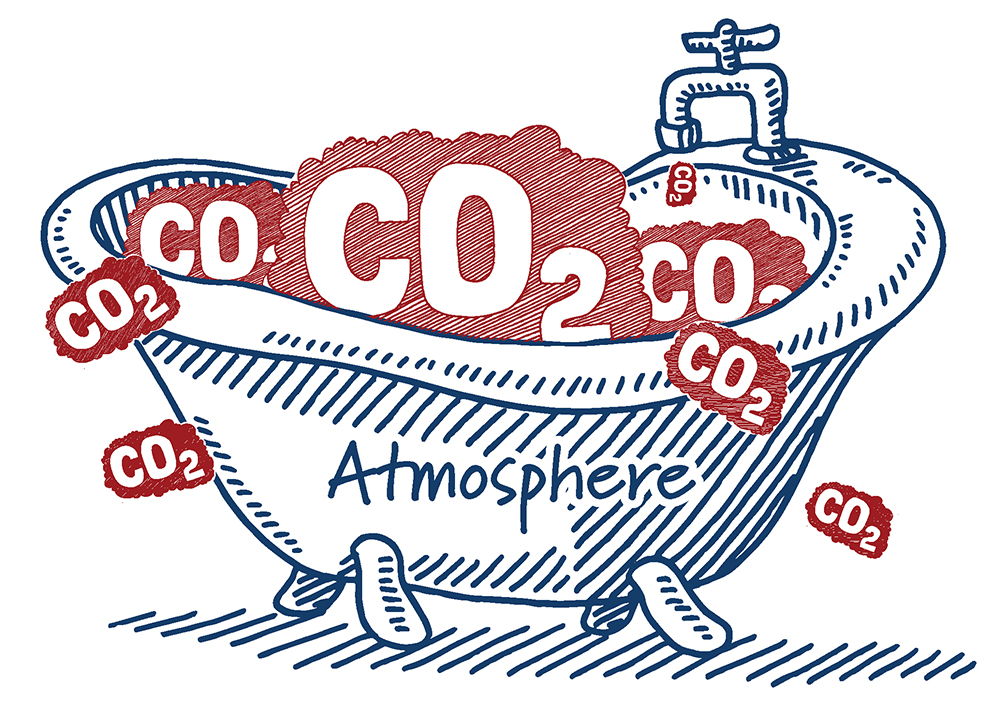

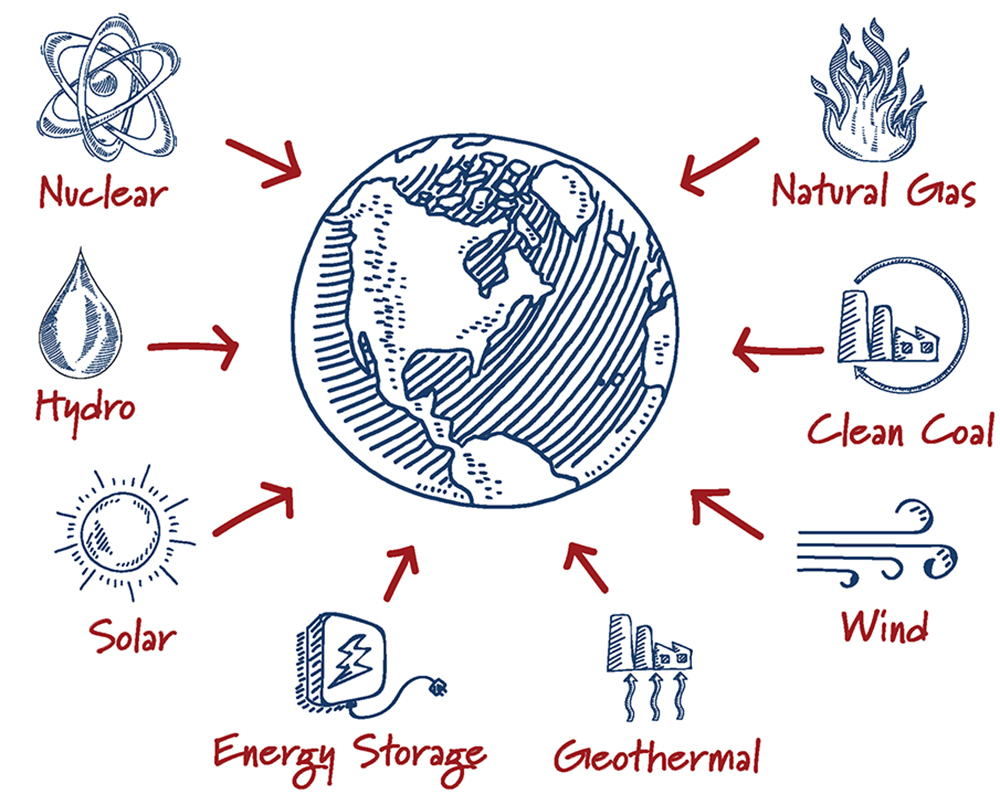
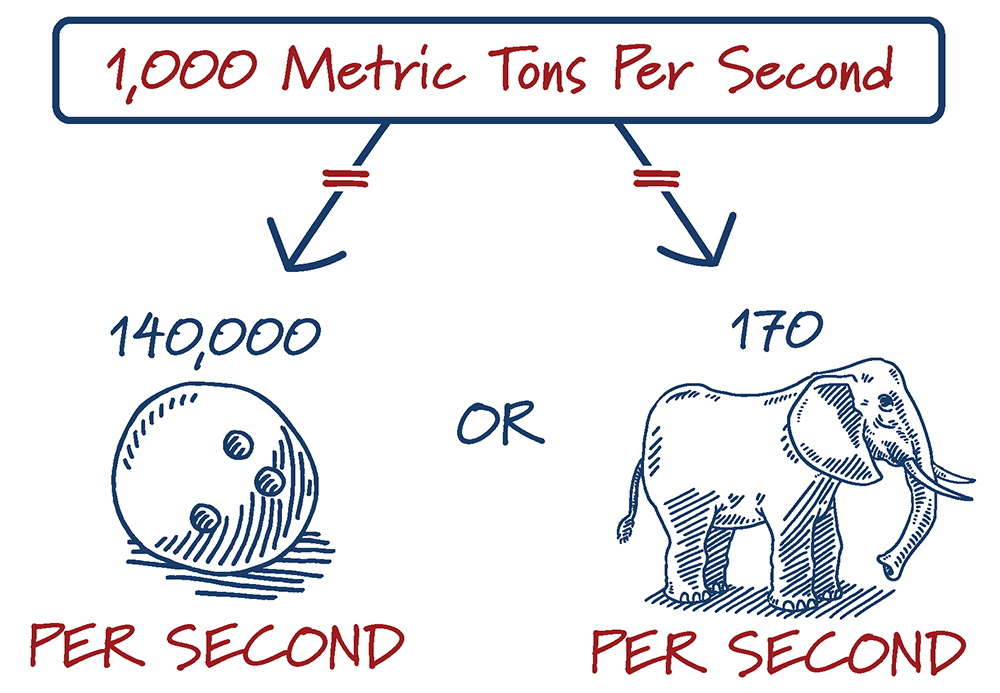

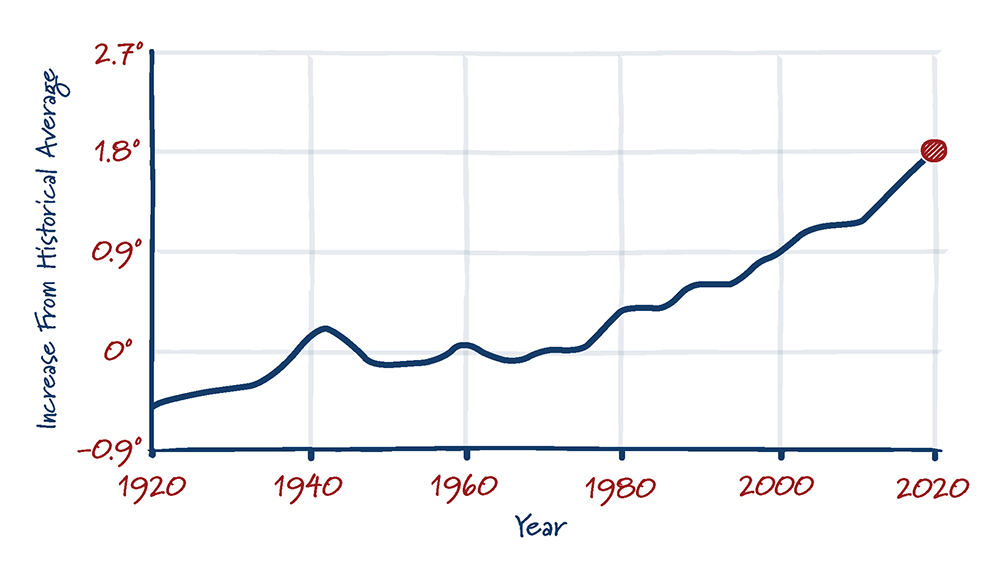
“Weather” refers to atmospheric conditions on a given day whereas “climate” is the average condition over decades. Sometimes weather, or extreme weather events, are conflated with climate when they should not be.
For example, speeding in your car alone rarely causes a car accident. The direct cause is usually something else, like a deer in the road, but speeding makes accidents much more likely, and severe when they do happen. In the same way, research indicates a warmer world creates conditions for more frequent and extreme natural disasters.
Most studies suggest that climate change has intensified, but you don’t need a study to see that a place like Houston experienced 3 ‘500-year’ floods in 3 years, or just up the road in Ellicott City, Maryland who have seen two 1,000-year floods in the last five years. Whether or not this is undeniably related, businesses and local governments are already adapting, mitigating and preparing for a future with more extreme weather events.
We have heard the question, how can you have more flooding, and more droughts? For that, we recommend NASA’s super satellites and supercomputers who study weather and geography, and they say, “droughts will pose serious challenges to the safety, health, food and water supplies of plants, animals and humans in some regions, and floods will do the same in others.”
Under the current emissions trajectory, hundreds of billions of dollars are at risk in key sectors by the end of the century.
The private sector, as well as governments at each level — local, state and federal — are mitigating potential economic challenges due to climate change.
The U.S. Military is also strategizing how best to handle damaging weather events. A 2019 reportproduced by the U.S. Army War College and NASA for the Army said that “the Department of Defense (DoD) is unprepared for the national security implications of climate change-induced global security challenges.” Even simple logistics like hydration: The study says, “The U.S. Army is precipitously close to mission failure concerning hydration of the force in a contested arid environment. The experience and best practices of the last 17 years of conflict in Afghanistan, Iraq, Syria, and Africa rely heavily on logistics force structures to support the warfighter with water mostly procured through contracted means of bottled water, local wells and Reverse Osmosis Water Purification Units (ROWPU).” The Army is reinvesting to keep pace with rising global temperatures, especially those arid areas of conflict.
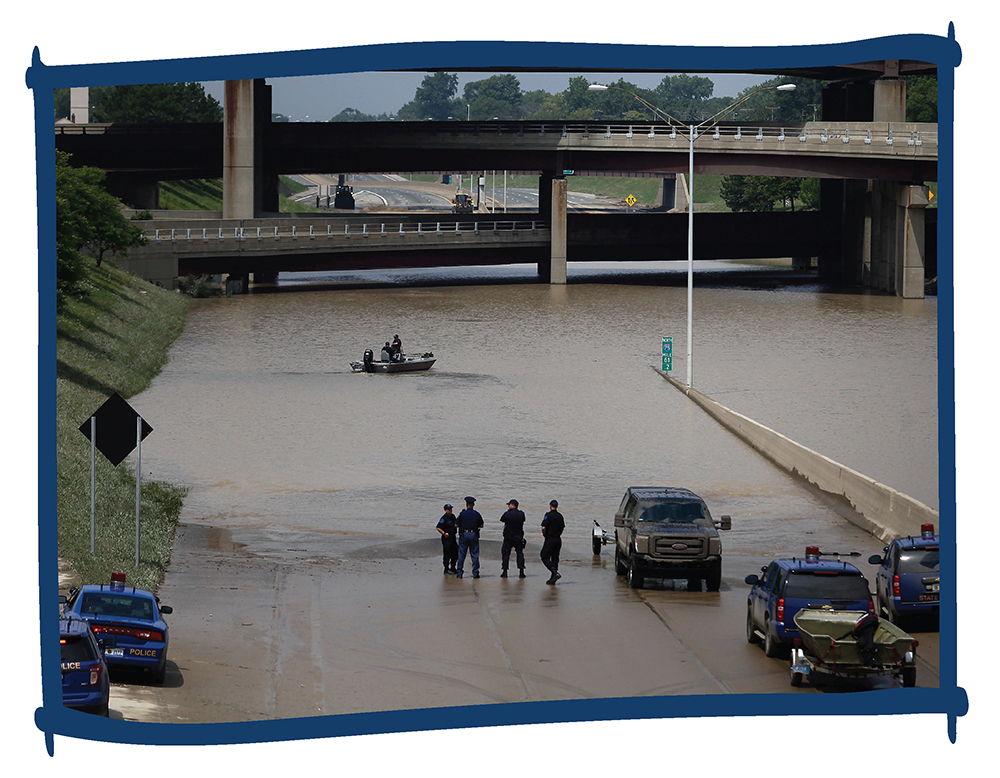
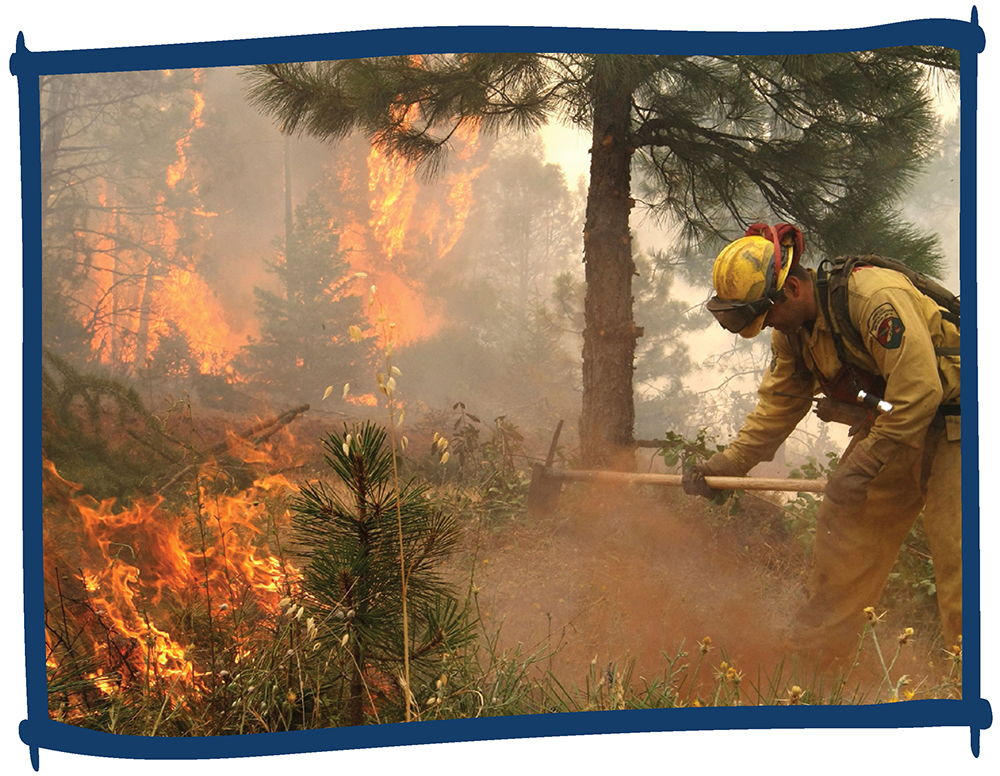

U.S. CO2 Emissions by Power Sector
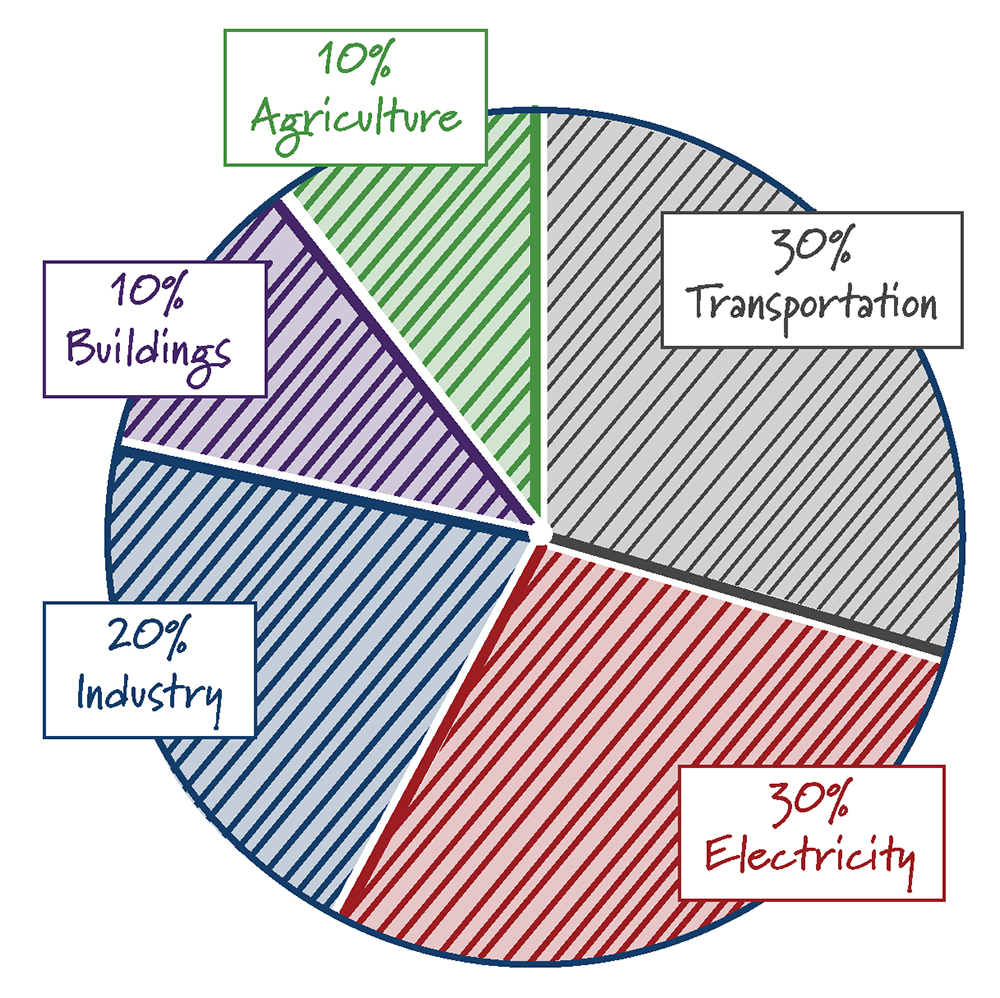

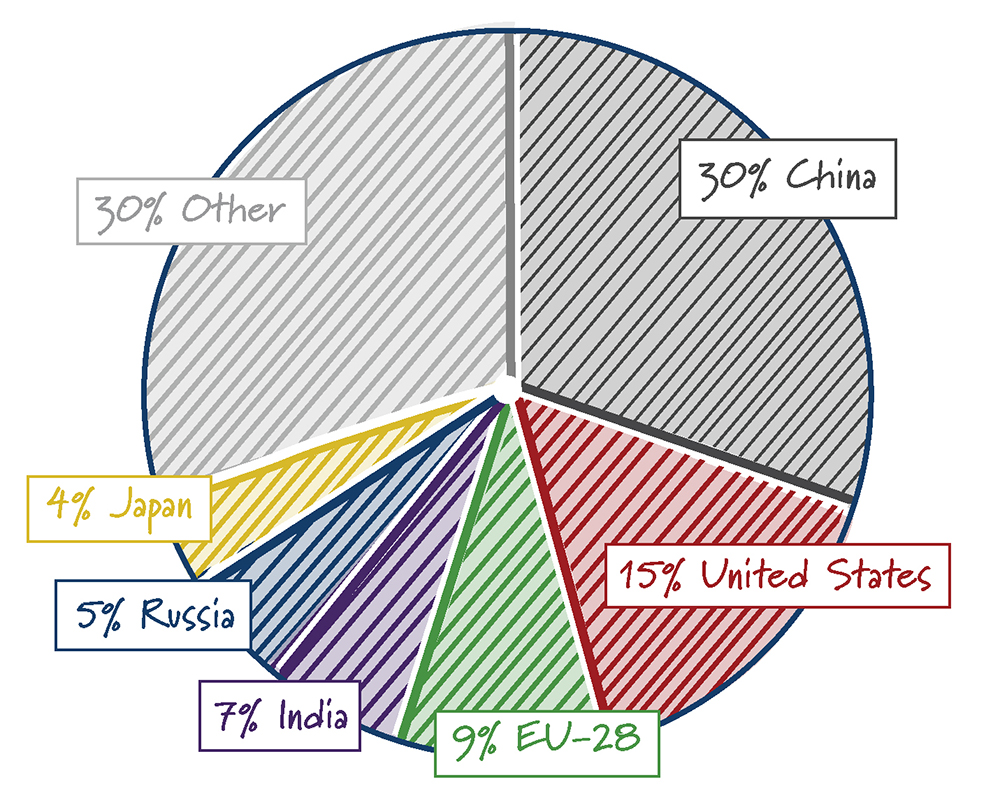
Fortunately, we have several options to combat climate change. Each comes with its own benefits, costs, and risks.
Solution 1: Make more clean energy
One way to tackle climate change is to reduce greenhouse gas emissions by accelerating clean energy technologies that don’t release emissions into the atmosphere. These power sources include nuclear, renewable energy and power plants that can filter emissions before they ever reach the air. Currently, over 80% of Americans’ greenhouse gas emissions come from energy use, such as gasoline for driving or coal for electricity.
Solution 2: Adapting to climate change: more resilient communities
Societies can also prepare for the consequences of disasters. Some communities are already experiencing the effects of climate change such as sea level rise. Many are proactively building sea walls, pumps, and storm warning systems. This solution requires long-term investments and a forward-looking view of the future. Pre-disaster mitigation is wise and fiscally responsible — for every dollar we spend on mitigation, we save four or more on damage. However, this approach does not stop increasing carbon dioxide levels from accumulating in the atmosphere or changing the ocean’s chemistry, a process called ocean acidification.
Solution 3: Vacuum CO2 from the air
Another option is to remove carbon dioxide from the atmosphere with trees and other natural means. Other companies are building “mechanical trees” that directly pull carbon dioxide from the air like a giant vacuum.
Solution 4: Air condition the planet
Supporters of this approach, often called “geoengineering” emphasize that this isn’t a substitute to more clean energy or removing carbon dioxide — rather it’s a supplement that might help us blunt some of the immediate impacts of climate change while we do the other 2. This is because this solution does not prevent the release of even more CO2, which has other effects beyond climate change like making oceans more acidic. Watch a video of researchers successful trial of the world’s first cloud-brightening technology in Australia.
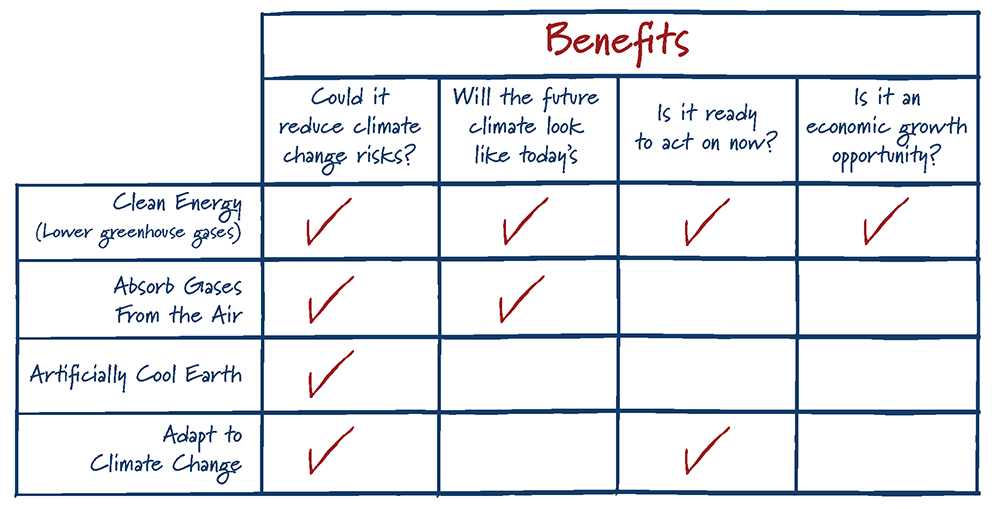
View more of Our Take and let us know what you think at jaylistens@clearpath.org.
